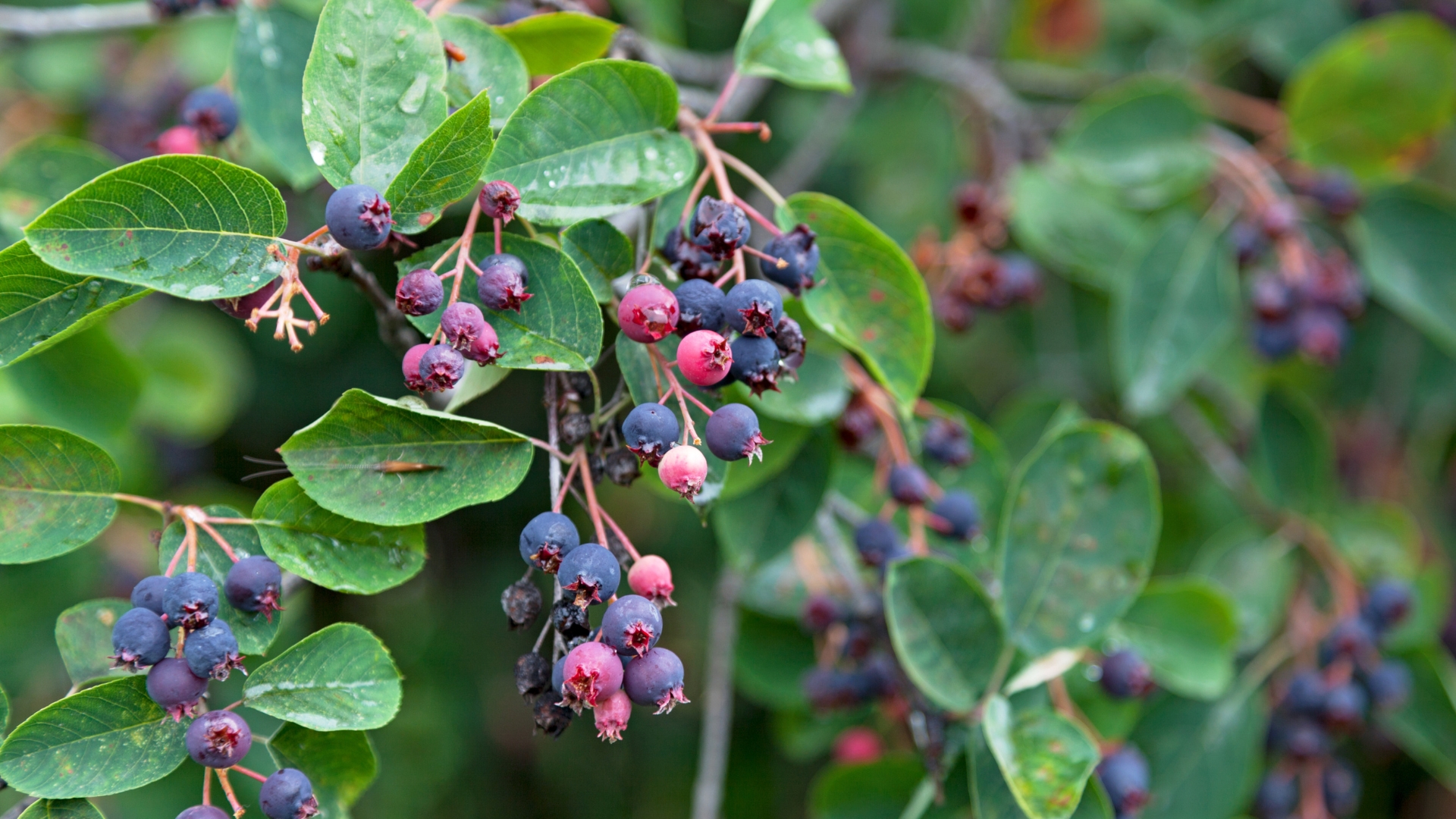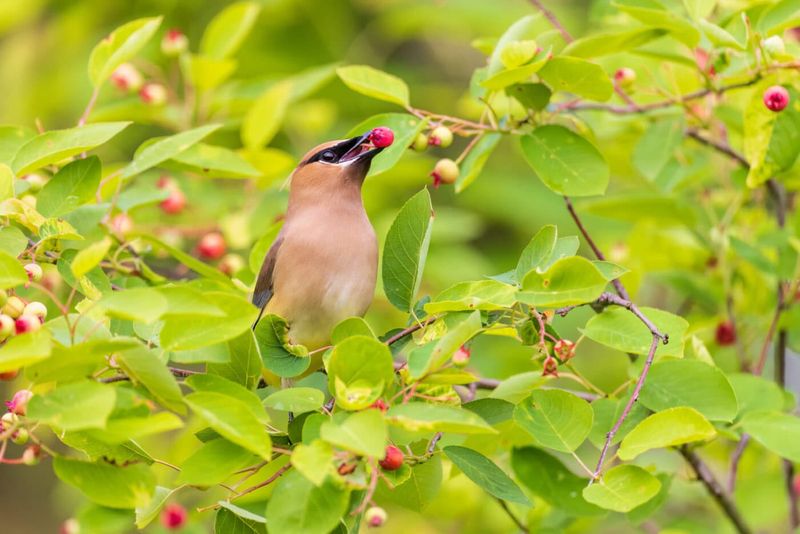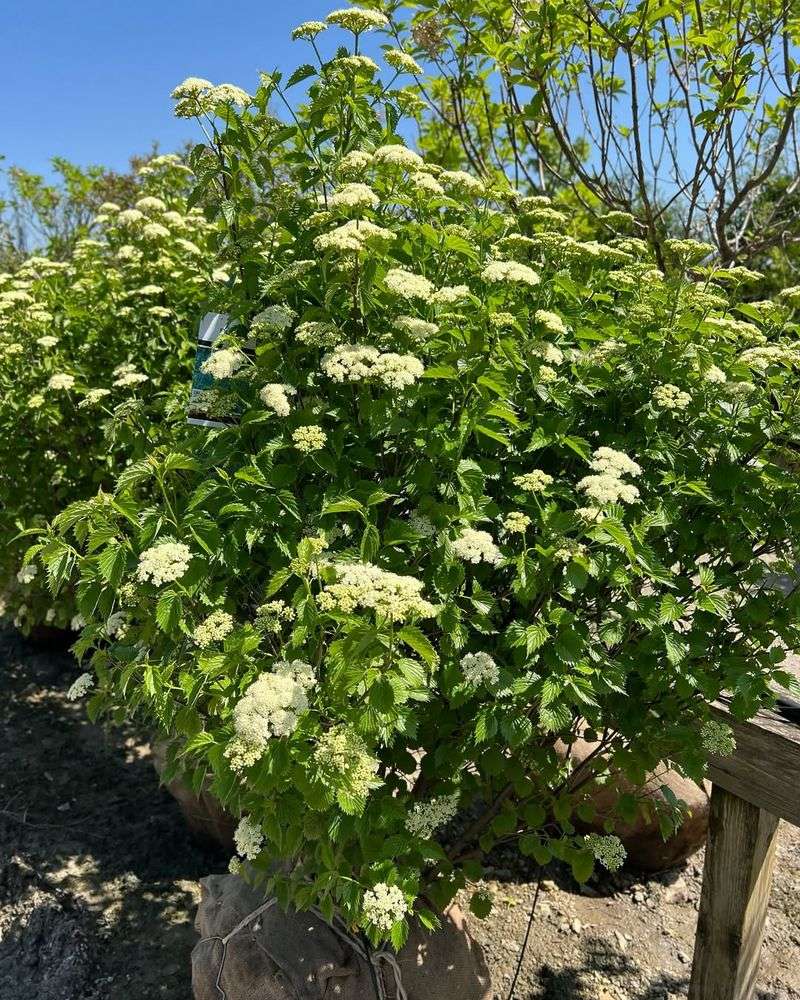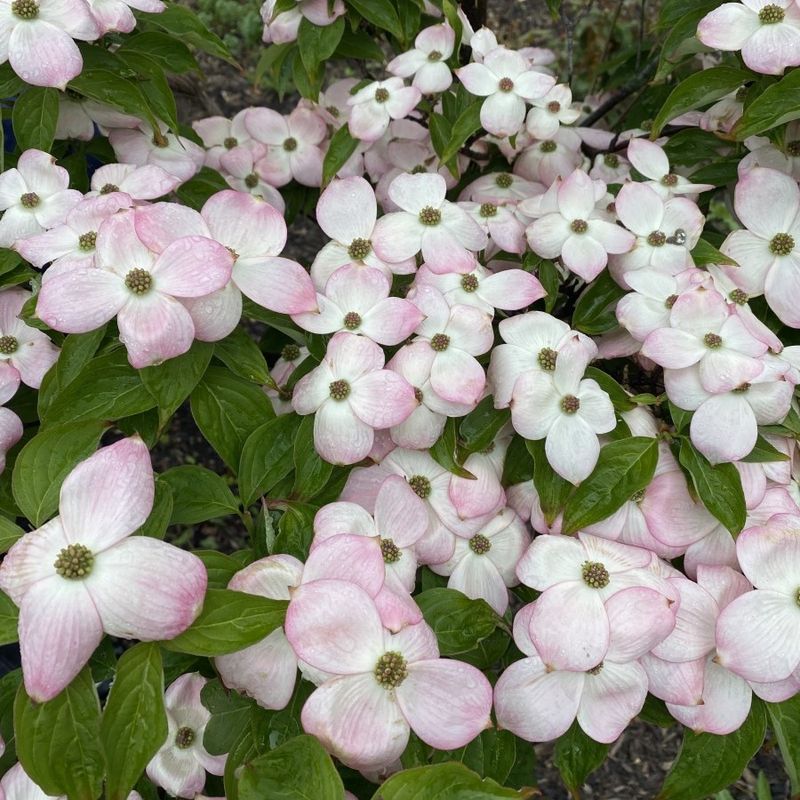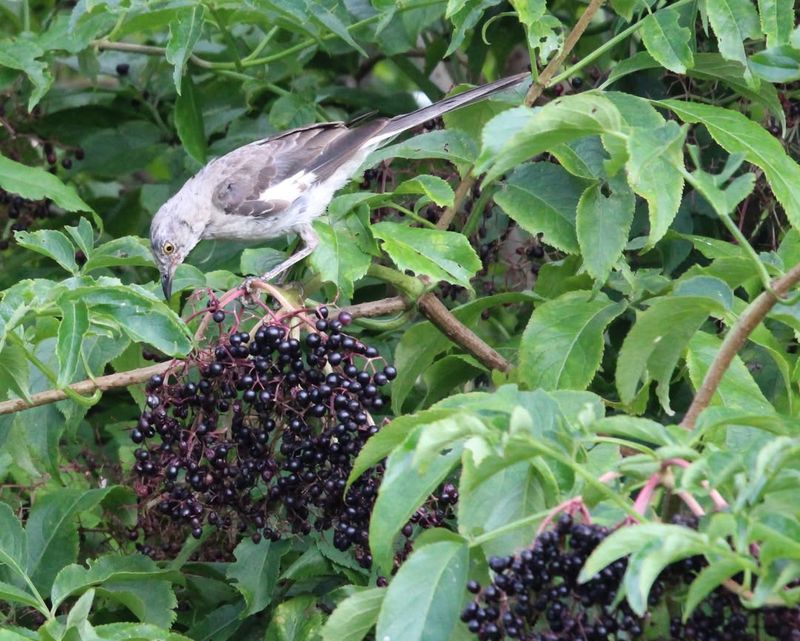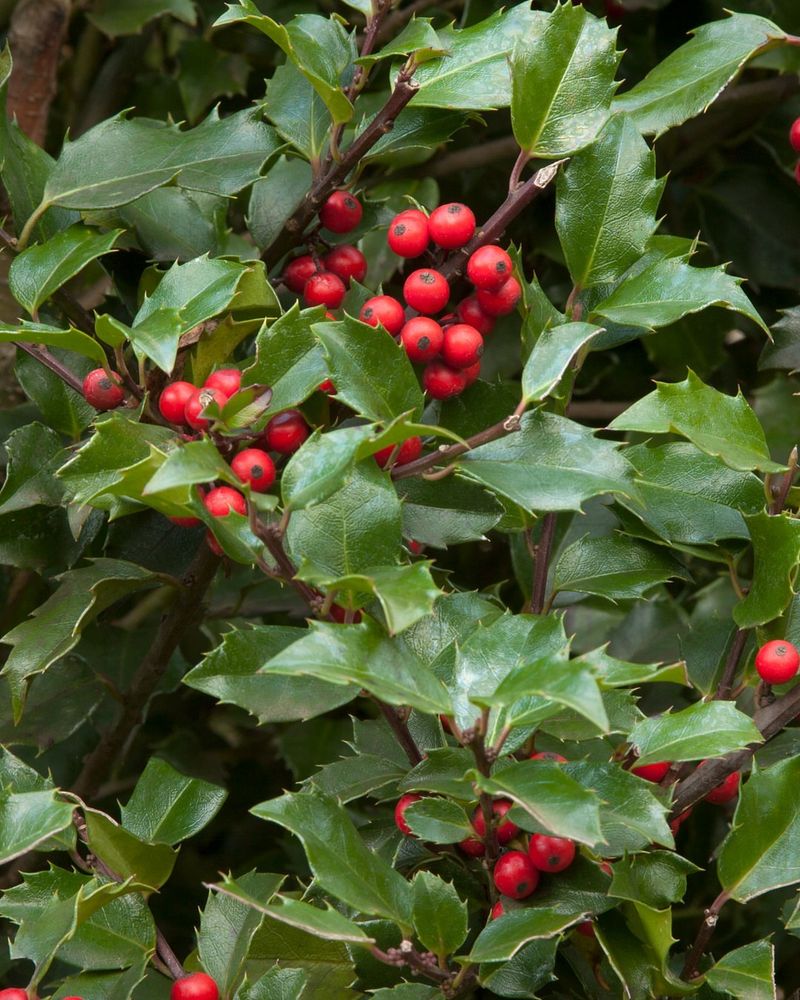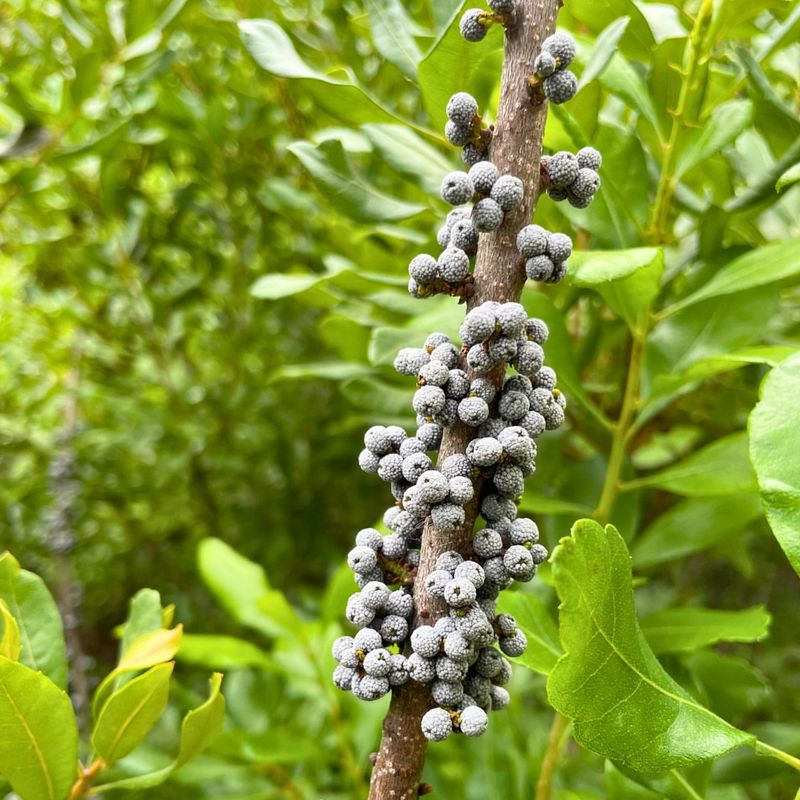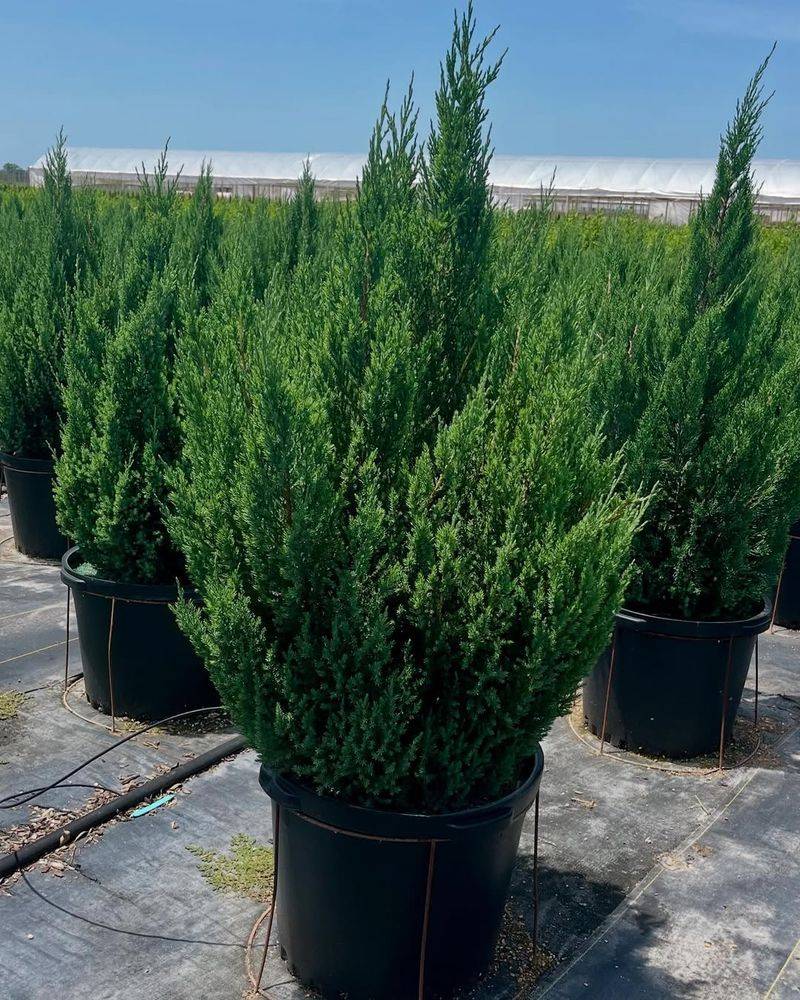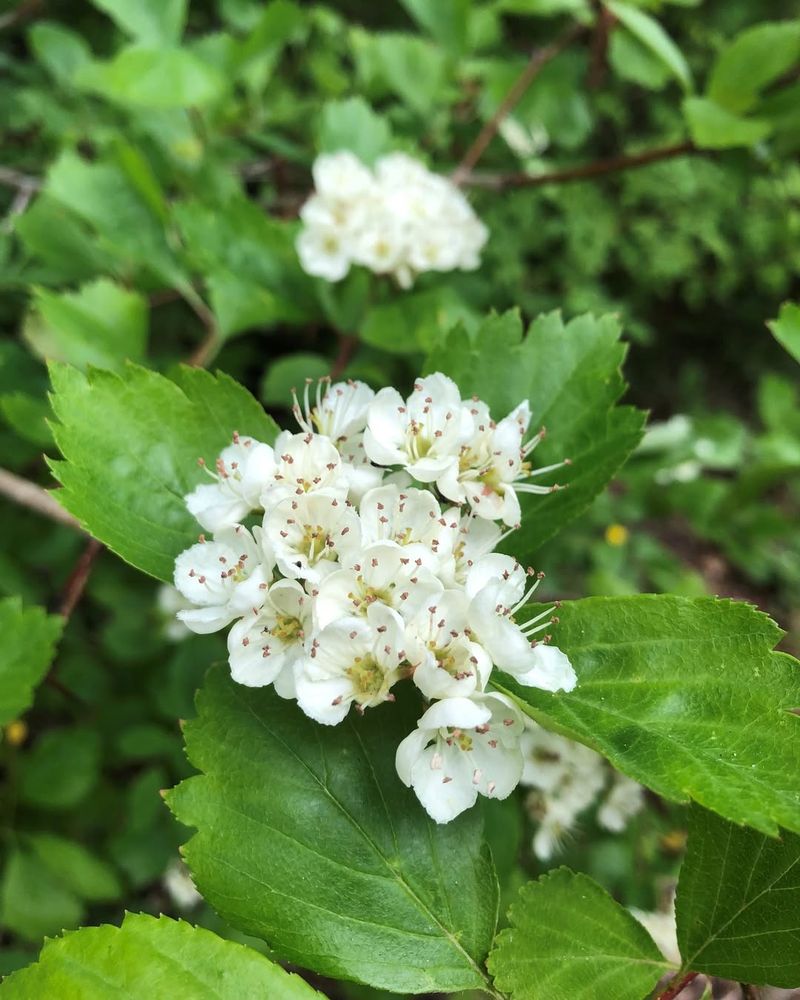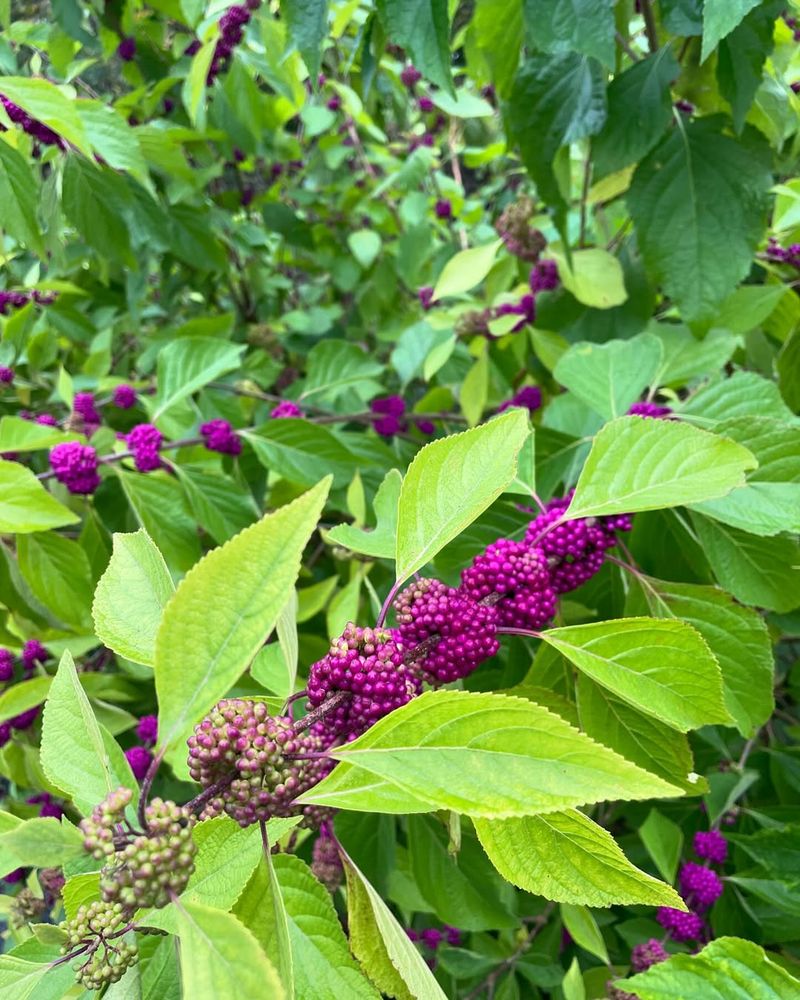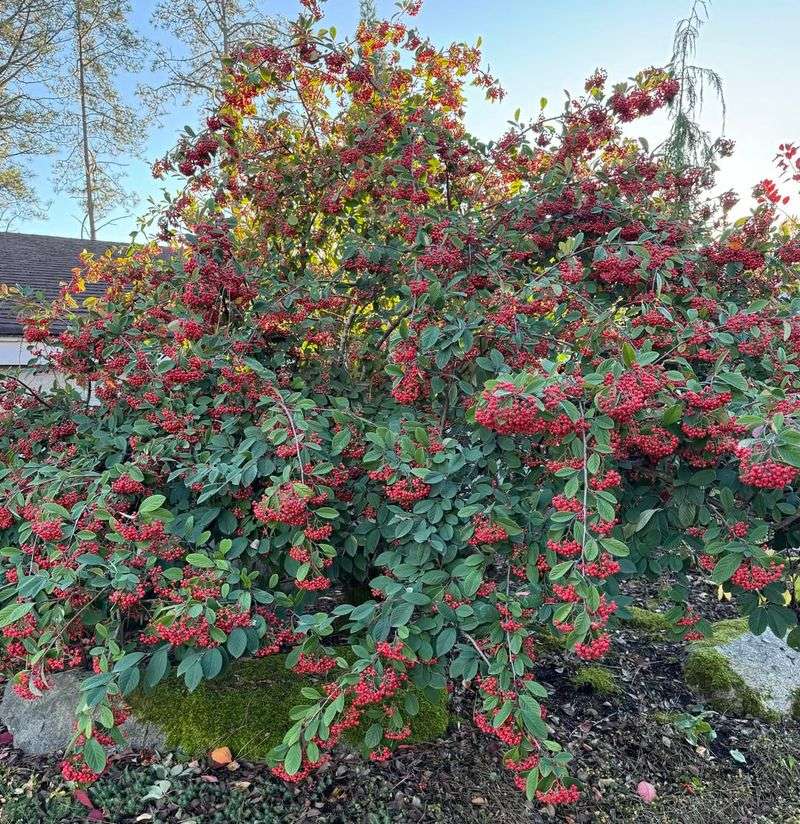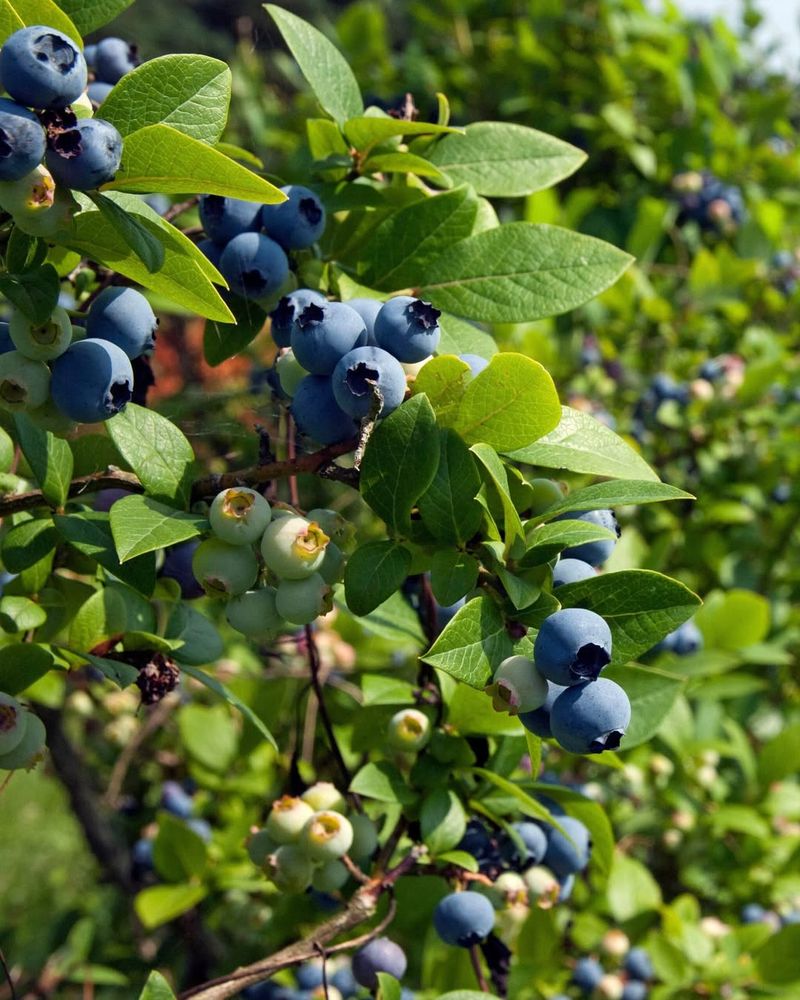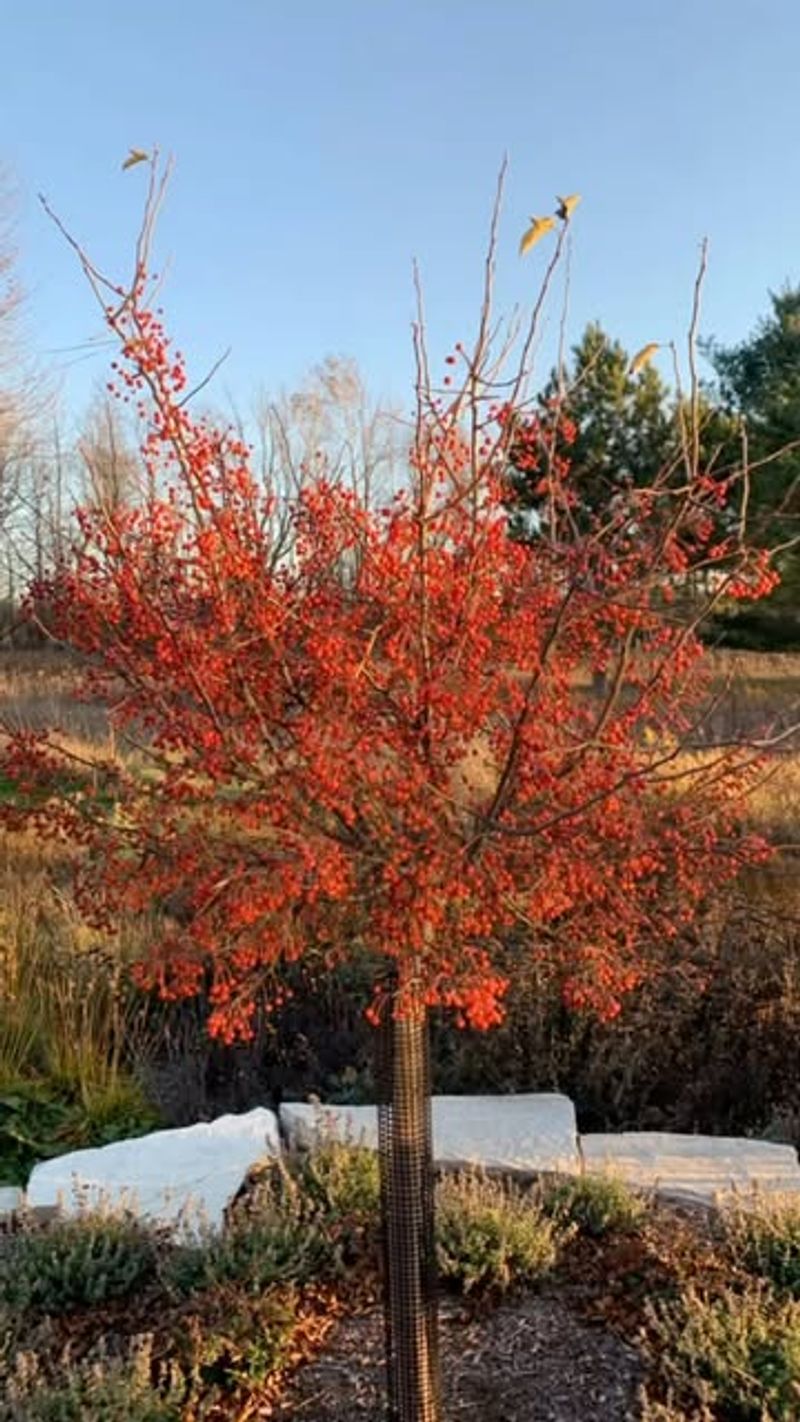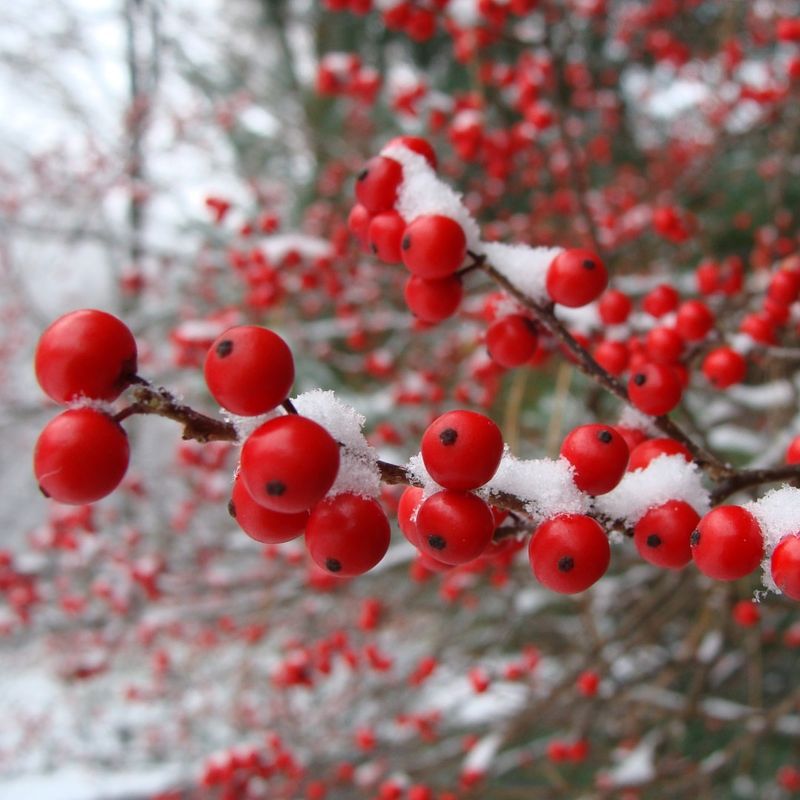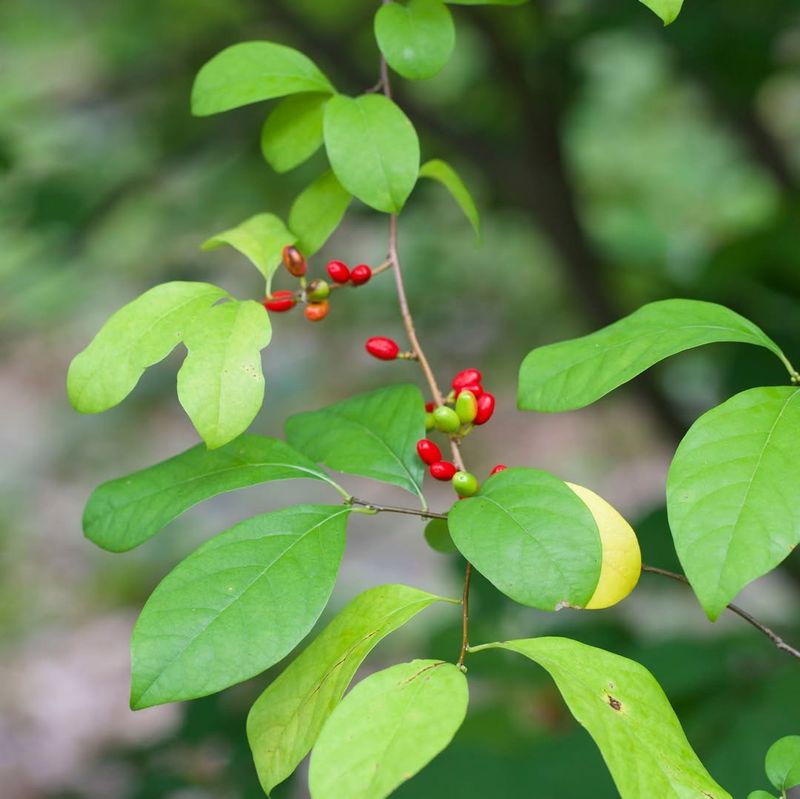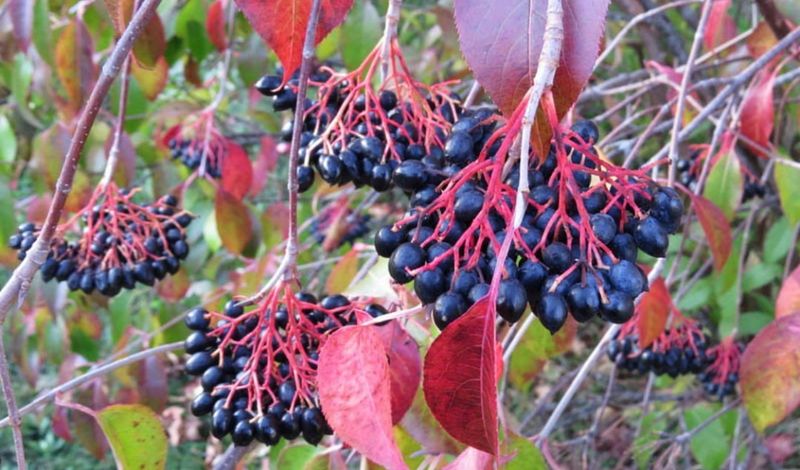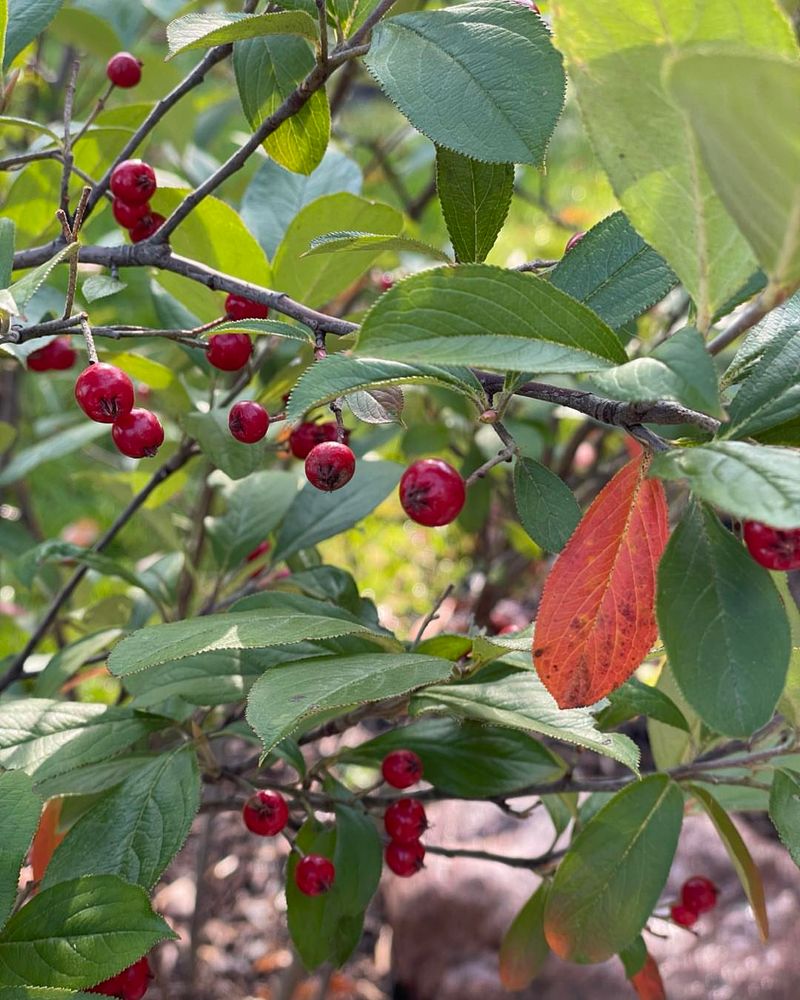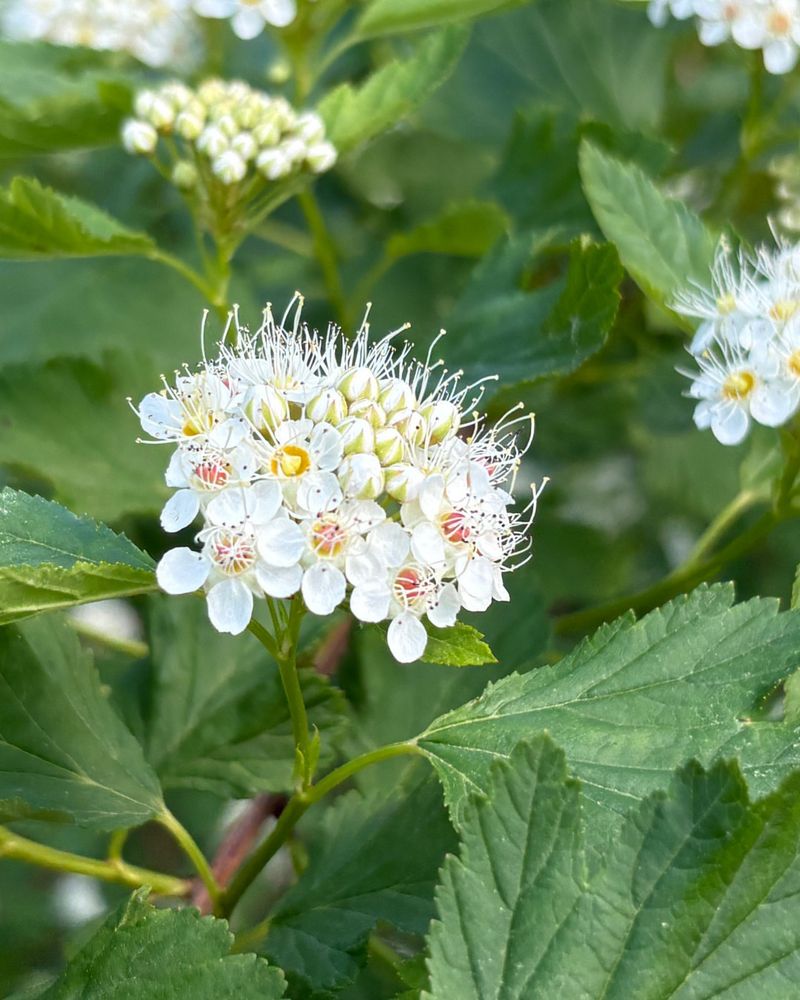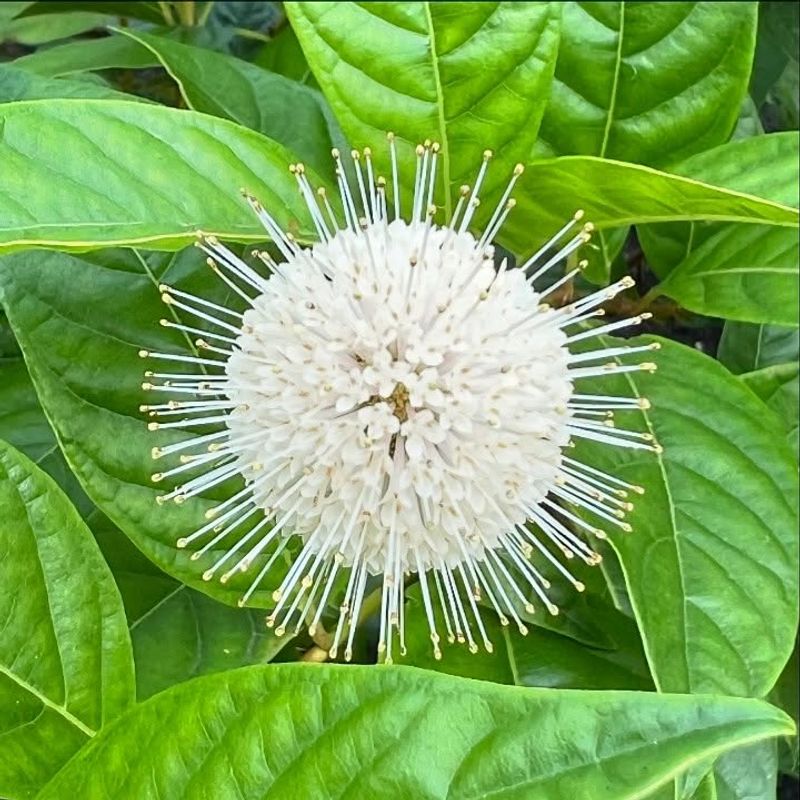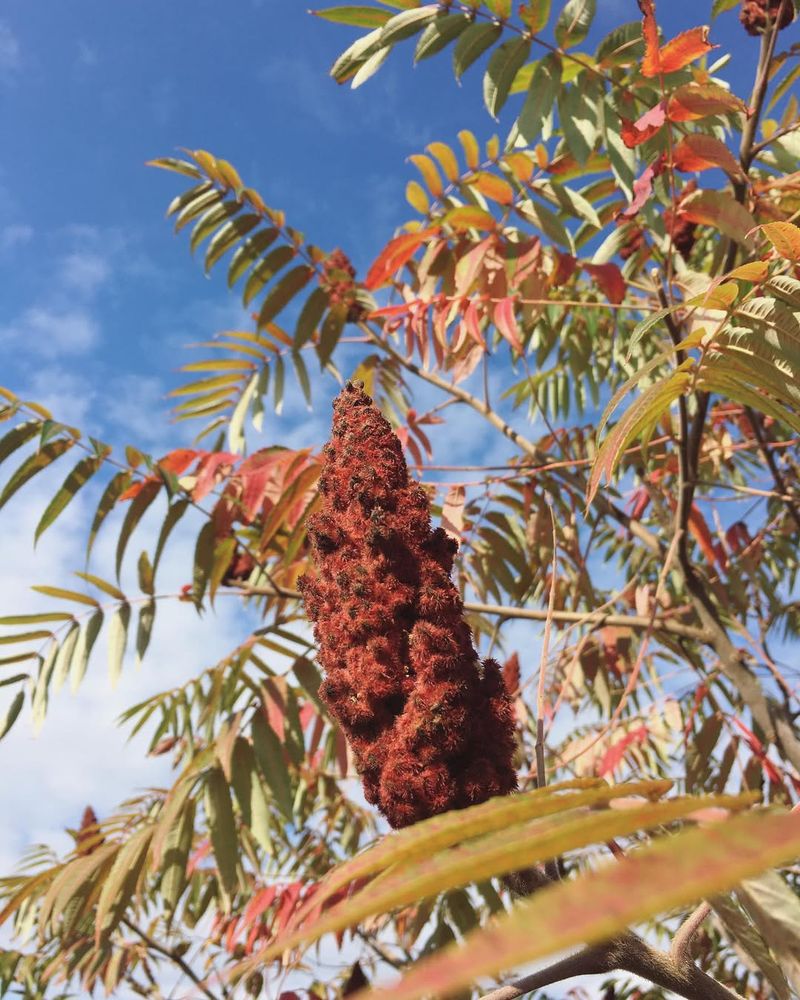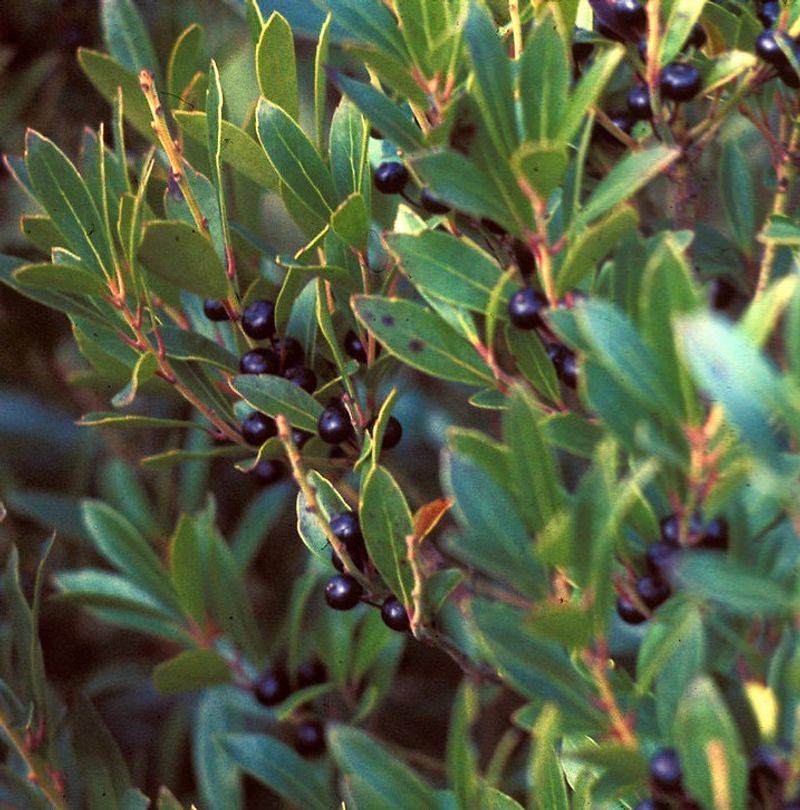There’s nothing sweeter than spotting a bird building a nest right in your own yard—it feels like a little badge of garden honor. I started planting with birds in mind a few seasons ago, and now I’ve got feathered neighbors popping in year after year.
The secret? The right bushes make all the difference. Some offer just the right cover, berries, or branches they love most.
Here are 20 of the best nesting-friendly bushes, plus easy care tips to keep them happy and healthy.
1. Serviceberry
Birds absolutely love the combination of berries and dense branches that serviceberry offers. Cardinals, robins, and bluebirds flock to these native shrubs for both nesting and feeding opportunities.
Water serviceberry moderately and prune after flowering to maintain shape. These adaptable bushes thrive in partial shade to full sun and produce delicious berries that humans can enjoy too – if the birds leave any!
2. Arrowwood Viburnum
Dense branching patterns make this viburnum perfect for birds seeking protected nesting sites. The bluish-black berries that appear in late summer provide essential nutrition for migrating species preparing for long journeys.
Plant in well-drained soil with morning sun and afternoon shade for best results. Regular watering helps establish young plants, but they become surprisingly drought-tolerant once established. Minimal pruning keeps this bird-friendly bush looking its best.
3. Dogwood
The horizontal branching pattern of dogwood creates ideal platforms for bird nests. Spring brings beautiful flowers, while fall delivers bright red berries that cardinals, bluebirds, and thrushes eagerly devour.
Keep soil consistently moist but not soggy, and apply a layer of mulch to retain moisture. These understory shrubs appreciate protection from hot afternoon sun in warmer regions, making them perfect for woodland garden edges where birds naturally gather.
4. Elderberry
Songbirds can’t resist the abundant purple-black berries that elderberry bushes produce in late summer. The umbrella-shaped flower clusters transform into nutritious berries that feed over 40 species of birds, including waxwings and thrushes.
Give elderberry bushes plenty of space – they can reach 10 feet tall and spread widely. Regular watering during dry spells keeps them productive, while a yearly application of compost helps fuel their vigorous growth and berry production.
5. Holly
Winter birds rely heavily on holly’s bright red berries when other food sources disappear. The dense, prickly foliage provides excellent protection from predators and harsh weather, making these evergreen shrubs bird magnets year-round.
Remember to plant both male and female holly bushes to ensure berry production. Place in well-drained soil with consistent moisture and apply acidic fertilizer in spring. Minimal pruning maintains their natural protective shape that birds prefer.
6. Bayberry
Coastal gardeners rejoice – bayberry thrives in sandy soils where other shrubs struggle. Yellow-rumped warblers and tree swallows particularly favor the waxy gray berries that persist through winter months.
These low-maintenance shrubs need little attention once established. Plant in full sun to partial shade and water deeply but infrequently. Their natural deer resistance makes them practical choices for gardens where browsing animals are problematic.
7. Juniper
Year-round protection makes juniper a favorite nesting spot for many bird species. The dense, prickly foliage deters predators while providing cozy shelter during harsh weather conditions.
Plant junipers in well-drained soil and full sun for best results. These drought-tolerant bushes require minimal watering once established. The blue berries attract cedar waxwings and robins, making junipers both beautiful and functional additions to bird-friendly landscapes.
8. Hawthorn
The thorny branches of hawthorn provide exceptional nest protection from predators like cats and raccoons. Many birds specifically seek out these defensive fortresses when raising their young.
Spring brings clusters of white flowers that attract pollinators, while fall delivers bright red berries that feed birds through winter. Plant in full sun with moderate watering, and be patient – hawthorns grow slowly but reward with decades of bird-friendly service.
9. Beautyberry
Nothing catches the eye quite like beautyberry’s vibrant purple fruit clusters that circle the stems like bracelets. These showstopping berries arrive in fall, providing vital nutrition for birds preparing for migration or winter.
Mockingbirds and catbirds particularly favor these striking shrubs. Plant in partial shade and provide regular water during establishment. A hard pruning in late winter encourages more branches and better berry production the following season.
10. Cotoneaster
Low-growing varieties spread horizontally, while upright forms can reach impressive heights. Either way, cotoneaster’s arching branches filled with small red berries become bird buffets in fall and winter.
Cedar waxwings and robins strip these bushes clean during cold months. Plant in full sun to light shade in well-drained soil. Their drought tolerance makes them practical choices for water-conscious gardeners who still want to support local bird populations.
11. Highbush Blueberry
Bluebirds, cardinals, and catbirds flock to these native shrubs for both nesting and feeding. The sweet berries provide exceptional nutrition during summer months when birds are raising their young.
Keep soil consistently moist and acidic for best results. Plant multiple varieties for cross-pollination and extended fruiting periods. Their brilliant fall foliage adds landscape interest after berries have been harvested by both birds and humans.
12. Crabapple
Dwarf varieties make excellent additions to smaller yards while still providing tremendous bird benefits. The small fruits persist through winter, becoming essential food sources when snow covers the ground.
Cedar waxwings and grosbeaks particularly relish crabapple fruits. Plant in full sun with well-drained soil and provide regular water during establishment. Disease-resistant varieties require minimal maintenance while maximizing benefits for your feathered visitors.
13. Winterberry
Unlike other hollies, winterberry drops its leaves in fall, dramatically showcasing bright red berries against bare branches. This deciduous holly creates a spectacular winter display while providing critical food for birds.
Remember to plant both male and female plants to ensure berry production. Bluebirds and robins particularly depend on these berries during harsh weather. Plant in consistently moist soil in full sun to partial shade for best berry production.
14. Spicebush
Early spring yellow flowers appear before the leaves, providing nectar for returning migrants. Later, the red berries become valuable food sources for thrushes and catbirds in late summer.
Native to woodland understories, spicebush thrives in partial shade and moist, rich soil. The aromatic foliage deters deer while providing habitat for spicebush swallowtail butterflies. This multi-benefit native deserves a place in any bird-friendly landscape.
15. Nannyberry
Late-season fruiting makes nannyberry especially valuable for migrating birds fueling up for long journeys. The bluish-black berries hang on clusters that resemble grapes, attracting a wide variety of fruit-eating species.
This versatile viburnum adapts to various soil conditions and light levels. Regular watering during establishment helps develop deep roots. Their multi-stemmed growth habit creates numerous protected nesting spots within a single bush.
16. Chokeberry
Don’t let the name fool you – birds love these berries even if humans find them astringent. Available in both red and black varieties, chokeberries provide nutritious fall and winter food for cedar waxwings and robins.
These adaptable native shrubs tolerate wet soils better than most bushes. Plant in full sun to partial shade and provide regular watering during dry spells. Their gorgeous fall color and bird-feeding benefits make them landscape superstars.
17. Ninebark
Exfoliating bark provides nesting material while the dense growth pattern offers excellent protection for bird families. White flower clusters in spring attract insects that become protein-rich bird food for growing nestlings.
Available in various sizes and foliage colors, ninebark adapts to different landscape needs. Plant in full sun to light shade in average soil. Their extreme cold hardiness makes them reliable choices for northern gardens where bird support is especially crucial.
18. Buttonbush
Unique spherical flower heads transform into interesting seedheads that birds pick apart through fall and winter. This wetland native thrives in moist areas where other shrubs might struggle.
Plant buttonbush near rain gardens or pond edges where soil stays consistently damp. The distinctive round flowers attract butterflies while later providing seeds for goldfinches and other small birds. Their ability to handle periodic flooding makes them practical choices for challenging sites.
19. Staghorn Sumac
The fuzzy red fruit clusters persist through winter, providing emergency food when other sources are depleted. Over 300 bird species have been documented using sumac for food or shelter.
Plant where their spreading habit won’t be problematic, as they naturally form colonies. Their drought tolerance makes them excellent choices for difficult sites. The spectacular fall color transitions from yellow to fiery orange-red before leaves drop.
20. Inkberry Holly
This native evergreen holly produces black berries that attract birds throughout winter. Unlike its prickly holly cousins, inkberry has smooth-edged leaves that create dense, bird-friendly cover year-round.
Plant in consistently moist, acidic soil for best results. Their compact growth habit makes them excellent choices for foundation plantings and hedges. Regular light pruning maintains their naturally rounded shape that provides ideal bird protection.

